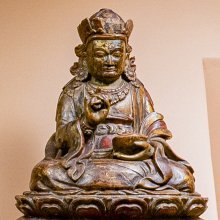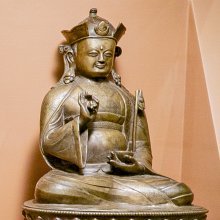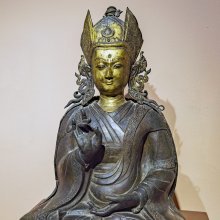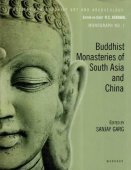Swat Valley: 1 definition
Introduction:
Swat Valley means something in the history of ancient India. If you want to know the exact meaning, history, etymology or English translation of this term then check out the descriptions on this page. Add your comment or reference to a book if you want to contribute to this summary article.
Images (photo gallery)
India history and geography
Source: Google Books: Manthanabhairavatantram (history)Swat Valley (Northern Pakistan) refers to the ancient Oḍḍiyāna.—By the beginning of the 11th century the Swat Valley where Oḍḍiyāna was located was overrun by Muslim invaders led by Mahmud of Ghazni. Although the population took its time to convert to Islam, Buddhism there was clearly declining and with it, no doubt Śaivism, even though Tibetan pilgrims in the 13th century did find a few surviving remains of Buddhism and maybe also its Hindu counterparts.
Bakker opines that: “the arguments for the location of Uḍḍiyāna in the Swat Valley seem to be stronger. Actual proof that the Swat Valley was known as Uḍḍiyāna is obtained from Tibetan travellers in the area. The Tibetan name for the Swat Valley was O rgyan or U rgyan, but a Buddhist pilgrim from Tibet, named Buddhagupta, tells us that Tibetan U rgyan is derived from Uḍḍiyāna, on account of the similarity of sound”.

The history of India traces the identification of countries, villages, towns and other regions of India, as well as mythology, zoology, royal dynasties, rulers, tribes, local festivities and traditions and regional languages. Ancient India enjoyed religious freedom and encourages the path of Dharma, a concept common to Buddhism, Hinduism, and Jainism.
See also (Relevant definitions)
Full-text: Sung Yun, Padmasambhava, Naga, U-rgyan, O-rgyan, Alp Tegin, Samanid, Ghazni, Kushana, Ashvaka, Ashmaka, Assaka.
Relevant text
Search found 5 books and stories containing Swat Valley; (plurals include: Swat Valleys). You can also click to the full overview containing English textual excerpts. Below are direct links for the most relevant articles:
Stupas in Orissa (Study) (by Meenakshi Chauley)
Uddiyana Pitha (in Tantric Buddhism) < [Chapter 2]
Tantric Buddhism in Orissa (Introduction) < [Chapter 2]
Vastu-shastra (5): Temple Architecture (by D. N. Shukla)
Temple architecture in Kashmir < [Chapter 12 - History of Hindu Temples (Prāsādas and Vimānas)]
Blue Annals (deb-ther sngon-po) (by George N. Roerich)
Chapter 17a - Gotshangpa together with his great sons < [Book 8 - The famous Dakpo Kagyü (traditions)]
The Edicts of Asoka < [January – March, 2005]
The Skanda Purana (by G. V. Tagare)
Chapter 39 - The Greatness of Barkareśvara < [Section 2 - Kaumārikā-khaṇḍa]
Related products



